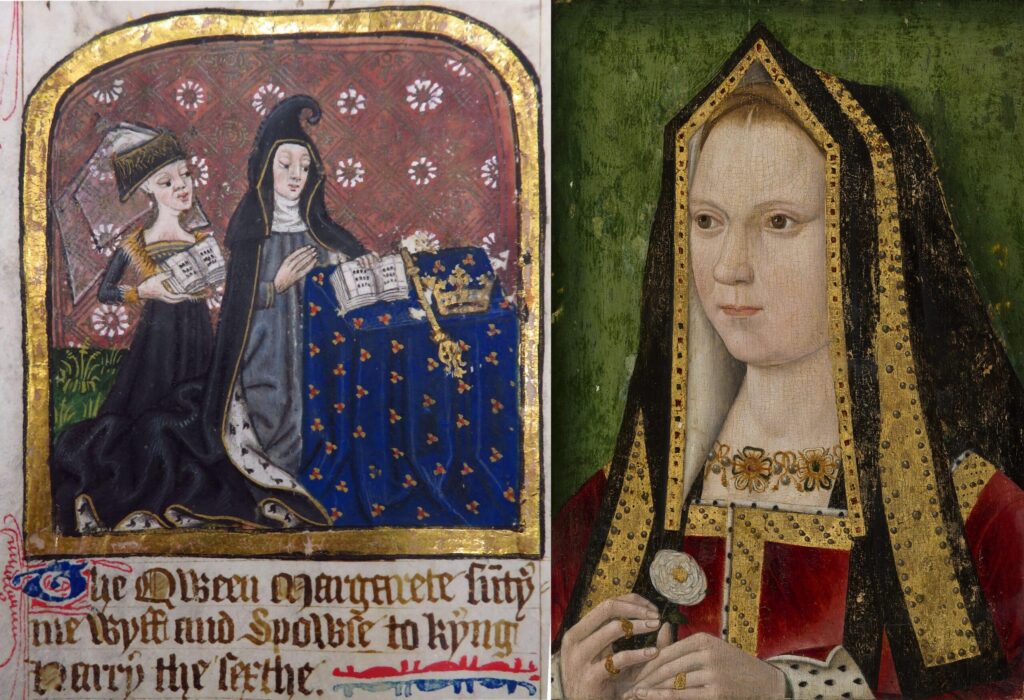Medieval queens wielded gifts as powerful tools to build alliances, reward loyalty, and assert authority. New research highlights how Margaret of Anjou and Elizabeth of York, two fifteenth-century queens of England, strategically used their economic resources to strengthen their influence through the art of giving. Lavish and symbolic gifts, ranging from gold and jewels to practical items like bows and arrows, were not merely acts of generosity but calculated moves in the intricate chessboard of courtly politics.
Dr. Michele Seah’s study published in the Journal of Medieval History sheds light on this lesser-known aspect of queenship. Lavish expenditures and carefully chosen presents allowed these queens to transform material wealth into social and cultural power, shaping the medieval English court in ways that resonate even today.
Queenly Gifts as a Symbol of Power
Margaret of Anjou, known for her grand gestures, often used New Year’s gift-giving to demonstrate her authority and cultivate relationships. In 1445–46, she gave presents worth £339—a staggering amount at the time—to over 130 recipients, including dukes, archbishops, and household servants. The gifts ranged from gold and silver artifacts to intricate jewellery, each carefully calibrated to reflect the recipient’s rank and significance.
Elizabeth of York, while less extravagant, maintained the tradition of gift-giving as a means of reinforcing loyalty and fostering goodwill. Drawing from her economic resources, she often sent gifts such as venison and live bucks from royal parks to courtiers and loyal staff, subtly elevating their status within the court.
Dr. Seah explains the broader implications of these practices:
Gifts and rewards were signal examples of how premodern queens used the economic resources available to them. They constituted a vital part of the exercise of queenship, and the practice of gift exchange was crucial to queens in myriad ways. Queens undoubtedly gave gifts and rewards for reasons including patronage, the maintenance of family and network ties and the exercise of political power.
Breaking Hierarchies Through Generosity
While gift-giving often adhered to social hierarchies, Margaret and Elizabeth occasionally used their presents to subvert expectations. Margaret bestowed unusually valuable gifts on some household servants, such as gilt cups and large cash rewards, blurring traditional class distinctions. Elizabeth similarly used venison and deer to reward stable staff and royal guards, acts that both acknowledged and elevated their contributions.
Such deviations from the norm revealed the queens’ agency in using their gifts to send political and social messages. Even practical gifts like bows and arrows, which Margaret gave to her servants, emphasized the recipient’s role in the court while highlighting the queen’s role as a provider and patron.
The Financial Burden of Gift-Giving
Though vital to their roles, these gifts often placed significant financial strain on the queens. Margaret of Anjou, in particular, faced chronic overspending. Despite efforts to curb expenses, her generosity often exceeded her income, leaving deficits recorded in her accounts. Elizabeth of York faced similar challenges, balancing the need for generosity with the realities of limited resources.
Dr. Seah concludes:
In the final analysis, the giving of gifts and dispensing of rewards was a vital part of the exercise of queenship. But it has only been by examining the economic elements of this type of expenditure in conjunction with an exposé on their social and cultural significance that we can better appreciate the importance of the queens’ economic resources in usage terms. These economic resources constituted a crucial part of the material foundations of queenly power, authority and agency. It would have been so much more difficult for the queens to function and fulfil their roles effectively without such resources at their disposal.
10 Examples of Gifts Given by Medieval English Queens
- Silver-Gilt Bowls for Henry VI – Margaret of Anjou gave her husband a pair of silver-gilt bowls worth £58 as a recorded New Year’s gift.
- A Sapphire for the Archbishop of Canterbury – In 1452, Margaret presented a £7 sapphire – the gem was believed to have healing powers which might help the ailing archbishop.
- Gold Chains for Margaret’s Ladies – High-ranking ladies in her court received gold chains as New Year’s gifts in 1447.
- Silver Plates for the Duke and Duchess of Suffolk – Margaret gave six silver plates to each, valued at £45, during her tenure as queen.
- Gilt Cups for Household Servants – Margaret gifted gilt cups to her servants, such as Thomas Mouseherst and Richard Birchley, with values recorded as £85 collectively.
- Silver-Gilt Belts for Lesser-Ranked Ladies – In 1446, Margaret gifted silver-gilt belts to lower-ranking ladies in her household.
- A Silver-Gilt Cup for Jacquetta Stanlowe’s Wedding – Margaret gifted a silver-gilt cup worth £6 13s 4d to Jacquetta Stanlowe in 1451 on the occasion of her marriage.
- Gold Collars for Barbaline Herberquyne and Osanna Herman – Margaret showed favour to these long-serving companions by gifting them distinctive gold collars in the 1440s.
- Venison and Live Bucks – Elizabeth sent venison and live deer from her royal parks to courtiers and staff, such as the Duchess of Suffolk and members of the royal guard.
- Rewards for Servants of Bishops – Elizabeth rewarded servants who delivered New Year’s gifts from bishops, such as 40s for the servant of the Archbishop of Canterbury.
The article, “Gifts and Rewards: Exploring the Expenditure of Late Medieval English Queens,” by Michele Seah, appears in the Journal of Medieval History. Click here to read it.
Michele Seah, who has a PhD from the University of Newcastle, Australia, focuses her research on queenship in later medieval England. You can follow her on Academia.edu or on X/Twitter @mlcseah
Subscribe to Medievalverse


